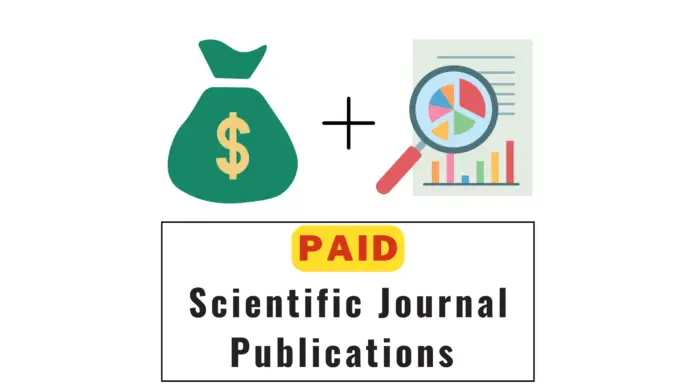Scientific research and discoveries have played a crucial role in shaping the world we live in. However, publishing findings in reputable Paid Scientific Journal can be expensive, time-consuming, and resource-intensive.
Some scientific journals offer free access to their articles, while others require payment to access the publications. In this article, ilovephd will explore what paid scientific journal publications are, why they exist, and their implications for the scientific community.
What Are Paid Scientific Journal Publications?
Paid scientific journal publications refer to articles, research papers, and other forms of scholarly content that require payment to access.
These publications are often referred to as “subscription-based” or “paywalled” journals because readers must pay to access the content. The payment is typically made in the form of a subscription fee or a pay-per-view charge.
Why Do Paid Scientific Journals Publication Exist?
The primary reason why paid scientific journal publications exists is to cover the costs associated with the publication process.
Publishing a scientific article requires a significant investment of resources, including editorial and peer review services, copy editing, typesetting, and hosting the content online.
The fees charged by publishers cover these costs and ensure that the journals can continue to operate and provide valuable services to the scientific community.
The Implications of Paid Scientific Journal Publications
One of the primary implications of paid scientific journal publications is that they limit access to scientific knowledge.
Access to scientific publications is critical for researchers, students, and other stakeholders to remain informed about the latest research findings and advances in their field.
However, the cost of accessing scientific publications can be a significant barrier to access, particularly for researchers from low-income countries and institutions with limited funding.
The Emergence of Open Access as an Alternative
To address this issue, many organizations and initiatives have emerged to promote open access to scientific publications. Open access refers to the practice of making scientific publications freely available online, without paywalls or other access barriers.
Some open-access journals charge authors a fee to cover the publication costs, while others rely on alternative funding models, such as institutional support or donations.
In recent years, the open access movement has gained momentum, and many governments, funding agencies, and academic institutions have adopted policies that require researchers to make their publications freely available.
This trend has led to the proliferation of open-access journals and platforms, which have made it easier for researchers to access and share scientific knowledge.
Summary
Paid scientific journal publications are an essential part of the scientific publishing ecosystem, providing valuable services to the scientific community. However, they can also limit access to scientific knowledge, particularly for researchers from low-income countries and institutions.
The open access movement has emerged as a response to this challenge, promoting the free and open sharing of scientific knowledge to ensure that everyone can benefit from the advances made in science and technology. By adopting open-access policies and supporting open-access journals, we can ensure that scientific knowledge remains accessible to everyone.

